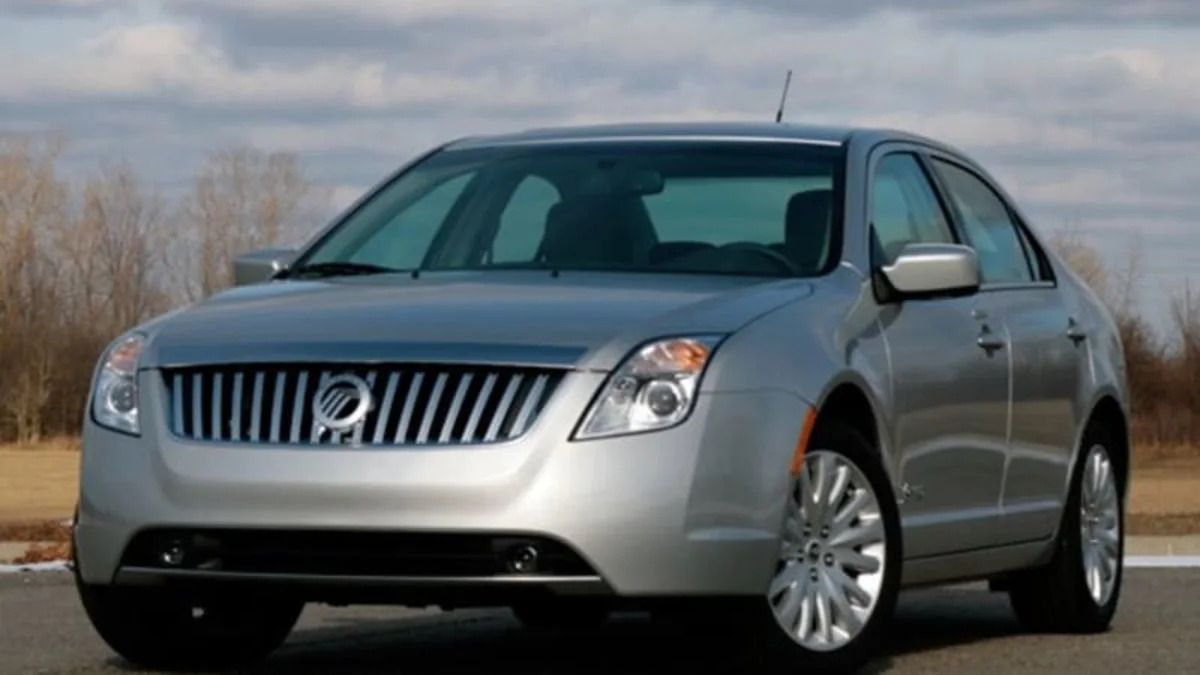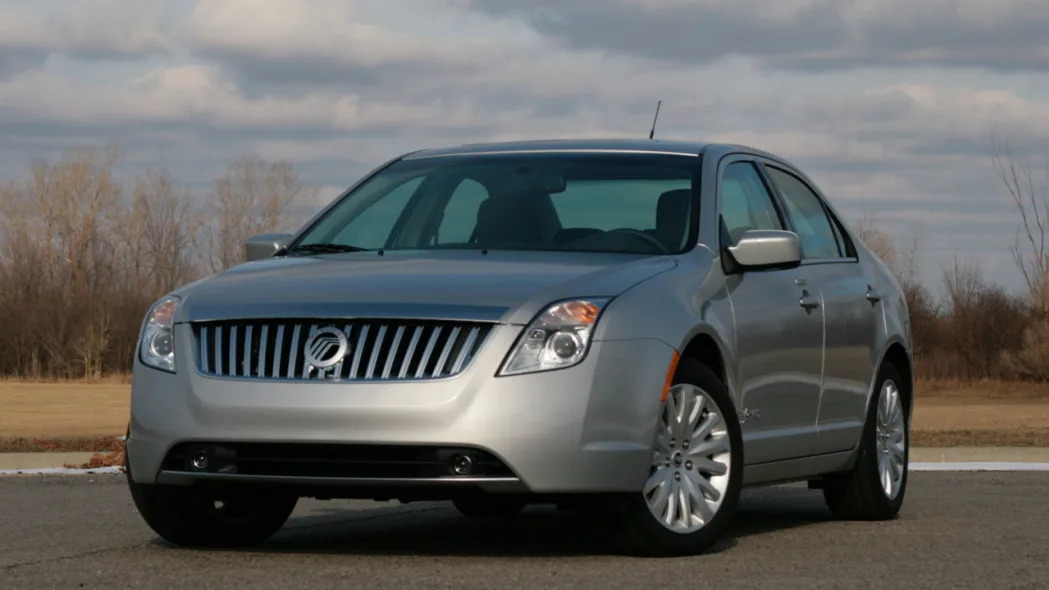2010 Mercury Milan Hybrid - Click above for high-res image gallery
In a recent op-ed piece published in The Wall Street Journal, Alan Reynolds of the Cato Institute starts by making a few decent points about fuel taxation and fuel economy rules. Unfortunately, he undermines himself with some blatant errors and misinformation. In discussing how Detroit automakers will deal with new fuel efficiency requirements, he makes the all-too-common mistake of referring to Ford's hybrid system as licensed from Toyota ("Similarly, Ford has the Toyota-licensed hybrid Fusion and will soon produce the European Ford Fiesta in Mexico").
The reality is that Ford independently developed its own hybrid system at the same time Toyota was masterminding its own. The basic architecture of both systems is the same and both are based on the concepts developed and patented by TRW engineers in the late 1960s. When Ford introduced the Escape Hybrid, Toyota went after the Blue Oval for infringing on its patents. Ford had patents of its own on the technology that Toyota was using. Eventually, the two companies reached a cross-licensing agreement that gives both companies the right to build their own systems. Such cross-licensing agreements are common in these kinds of cases, but Ford did not use the Toyota hybrid system. The only other company that uses Toyota's system is Nissan for its Altima hybrid, and they actually buy hardware from Toyota. We continue deconstructing Reynolds' arguments after the jump
[Source: Wall Street Journal]
Photos Copyright ©2009 Sam Abuelsamid / Weblogs, Inc.
Reynolds explains that Toyota can sell big fuel-guzzling vehicles like the Tundra and Lexus LS because it also sells efficient vehicles like the Yaris and Corolla. While this is partly true because the fuel efficiency of the small cars does offset the higher consumption of the bigger vehicles when calculating the company's fleet average, there is more to the story. Toyota's big trucks have not been nearly as commercially successful as any of their domestic competitors. As a result, the penalty isn't nearly as big to offset. This is even more true for Nissan. Lexus' LS also sells in comparatively small numbers, with only 20,255 units moved in 2008.
The author does give due credit to Ford for its upcoming Fiesta and Chrysler for the Fiats it will soon sell, but goes on to trash General Motors for the upcoming U.S. market Cruze, a car which no one has driven yet. This is certainly disingenuous, since there is no guarantee that the Fiats will be any better than GM's offerings. We've driven the Fiesta and it's a great little car and the new Focus will likely be very good as well.
While the current Aveo leaves a lot to be desired, it's at the end of its life-cycle and will be replaced by the end of next year with a new American-built car. The Aveo replacement may be joined by the even smaller Spark, which should help matters.
The main point of Reynold's treatise is a complaint about fuel economy standards being an ineffective means to influence fuel consumption. To a large degree, he's correct as CAFE has limited influence unless fuel prices rise. Simply controlling what's supplied by automakers does not guarantee consumers will buy more expensive, fuel efficient vehicles. Reynolds advocates adjusting the taxes on fuel to make it equal on ethanol, gasoline and diesel at 24 cents a gallon.
While taxes could be adjusted, they will need to go substantially higher than Reynolds' suggestion if they're to have any real impact on consumer behavior. Thanks to Reuven for the tip!



Sign in to post
Please sign in to leave a comment.
Continue